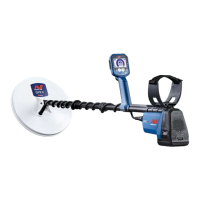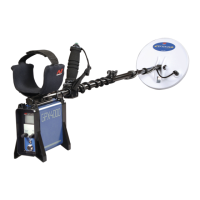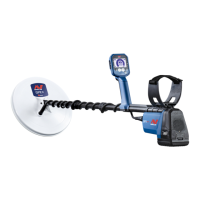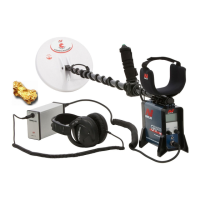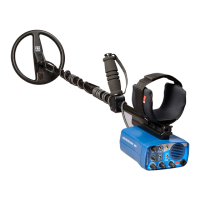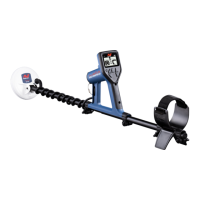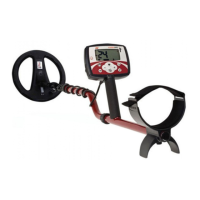54
GPX 5000 Range
GPX 4800 Range
Factory Preset
55
General, Specific, Off
General, Off
General
Ground Balance Type
(Ground Balance) Off
In very benign soils, such as non-mineralised loam or sand,
there can be very little and sometimes no ground effect.
These areas are quite rare but are identified when your
ground balance doesn't appear to be doing anything. By
switching the GB Type to Off you can achieve improved
depth and sensitivity.
This feature will most likely be used by beach hunters,
or inland treasure/relic seekers, as it is extremely rare to
encounter a spot in the gold field where Ground Balance
is not required.
Procedure:
Raise the coil off the ground, away from metal objects,
and switch to GB Off. After the tone is heard you can
commence detecting.
Note: The Iron Reject function (p. 74) will provide the best
results when using GB Type General.
General
This is the best Ground Balance Type for use in over 90% of
goldfield soils and uses the conventional automatic Tracking
as found on the previous Minelab models. In Tracking,
General Ground Balance (GB) samples variations in the ground
mineralisation and sets a continuously changing average
of the Ground Balance level. General GB is ideal for most
mineralised grounds and is the preferred Ground Balance Type
for soils which have highly variable mineralisation.
Specific (GPX 5000)
This is a special Ground Balance Type for use in areas of highly
magnetic, iron-rich soils. Use of Specific GB will allow you
to keep the coil closer to the ground, and allows Monoloop
coils to be accurately ground balanced in areas normally too
‘hot’ for their use. The Tracking function in Specific is more
conservative than in General, and will pause on even the
faintest response, removing the risk of 'Tracking out' faint
signals.
It is recommended that you be more active in checking
your GB setting when using Specific in variable soils. Stop
periodically, raise and lower the coil, listen to any variations
and re-ground balance where necessary. Ideally, Specific GB
should only be used in soils that are reasonably uniform or
non-variable.
Note: A different Ground Balance Procedure is required when
using Ground Balance Type Specific. See Ground Balance
Procedure for Specific, p. 56, for more information.
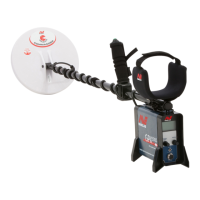
